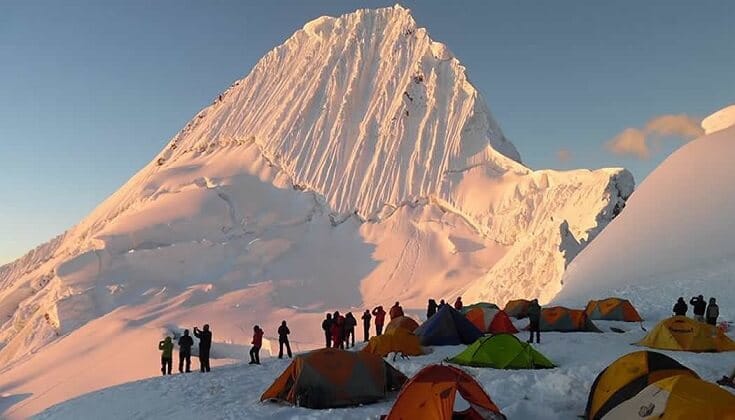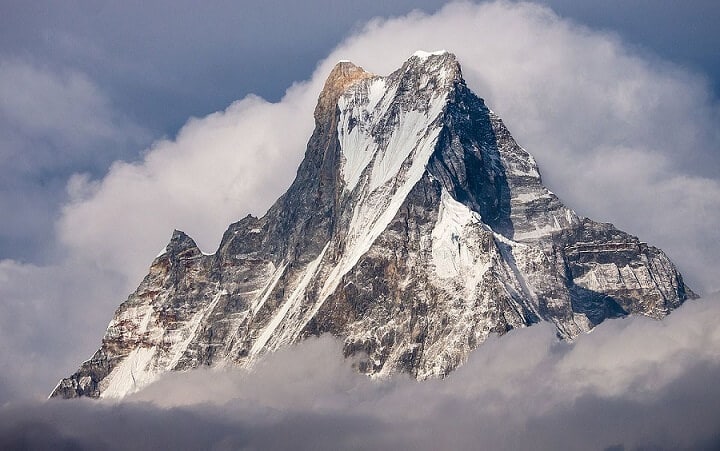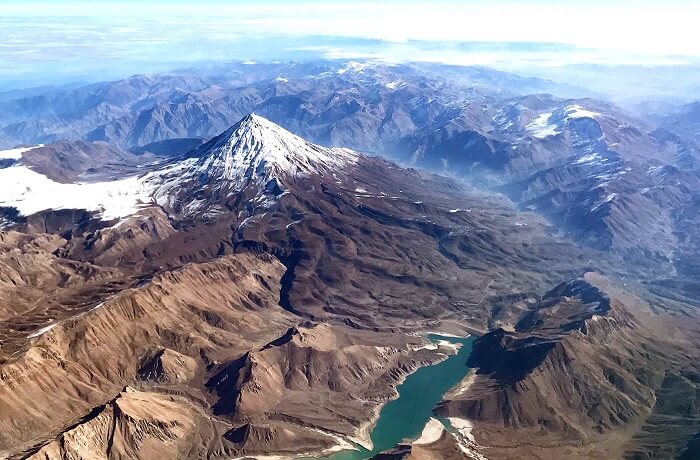If you offered to transport me anywhere on Earth for a day, I’d choose a meadow in India beneath the mountain of my dreams. Picture it: a long crescent ridge curls uphill then sharpens into a pinnacle of ice more than 25,000 feet high, the jet stream whipping a ribbon of cloud from its summit.
A citadel of lower peaks rises up around it. And lurking within, at the foot of the holy mountain known as Nanda Devi, lies an inviolable Shangri-la of golden grassland, silent but for the rumble of avalanches and the plaintive bleats of wild sheep.
Remote, awe-inspiring, transcendent, the Nanda Devi Sanctuary, a glacial basin in India’s Garhwal Himalaya, embodies everything that I love about mountain country.
I’ve been fortunate to glimpse it from afar, and, since then, I can see it daily in a panorama hung in a frame on a wall at home. Chances are I’ll never reach it—an all but impassable box canyon, the Rishi Gorge, offers the only viable route in.
My interest in mountains, whether climbing them or merely being in their vicinity, began with stories of heroic mountaineers. There wasn’t much altitude where I grew up in London. But my baptism came on a gleeful school trip to north Wales spent bouldering among the granite crannies of Snowdonia.
By the time a post-university trip took me from south to north up the spine of the Andes, bookish curiosity had graduated into a full-fledged passion.
In the years that followed, as I began to travel in earnest, it became an obsession marked by euphoric highs and crushing lows. I’ve seen crystalline dawns break over the Peruvian cordilleras, spent nights beneath yak hides in a yurt among the Ala-Too steppes of Central Asia, sat mesmerized by the raging dance of Nyiragongo’s lava lake in the Democratic Republic of the Congo.
I’ve also contracted snow blindness in Iran and almost fallen into a crevasse in Bolivia. I once skidded 300 feet down a couloir on my ass in Morocco’s Atlas Mountains, my progress halted only by the sudden, cartoonish interjection of a snowdrift.
An urge to ascend is not without its pitfalls.
Yet ask me to distill what it is about mountains that so possesses people and I falter.
The legendary climber George Mallory, speaking to a New York Times journalist before his ill-starred attempt on Everest in 1924, uttered perhaps the most celebrated explanation for the pull of high places: “Because it’s there.” That this glib refrain should have become so famous an explanation for summit fever—the default riposte to the lowlander’s question of “why?”—tells you all you need to know about the visceral, ambiguous allure of mountains.
Some of us just can’t help seeing a peak without wondering what might be visible from its summit, and we’re not sure why.
This much is certain: the fever that gripped Mallory is an urge more cultural than instinctive. For millennia, our relationship with mountains was defined by fear.
They were perilous obstacles, best avoided. Only in the 18th century, as early holidaymakers realized that you can’t enjoy a view without having a vantage, did trepidation evolve into active adventuring.
Those fearsome characteristics of peaks—the exposure, the extremity, the potentially fatal consequences of a misplaced foot—have now become reasons to go.
For me, however, the emotional draw of mountains has always taken precedence over the pursuit of adrenaline. The act of ascending embodies escape; the sight of the lowlands receding—houses reduced to child’s bricks, humans to ants—provides sweet refuge for the urban soul.
People talk of changing perspectives, of senses heightening in the face of natural permanence and grandeur. The world’s great mountains resist any attempt to civilize them—they are too tall, too steep, too wild, too cold.
Now more than ever, it’s heartening to find a landscape that cannot be tamed. No wonder that mountains from Kinabalu to Kailash remain objects of veneration.
As barriers to inherent progress, mountains have always forced travelers to slow down and mingle with the communities that cling to them and, more often than not, to avail themselves of a stranger’s kindness. Once, in the Ethiopian Highlands, a family welcomed me into their mud-walled hut as a storm broke over the plateau.
They turned out their meager larder, the mother roasting coffee, the father breaking bread, as the children glared at me, an alien in their midst.
It’s for moments like this, as much as for the varied topography, that a love affair with high places is a quest without end. It would take many lifetimes to properly explore the world’s great ranges, many more to tread the obscure trails hidden among cliffs and clouds.
Did you know that the tablelands of Venezuela were the inspiration for Arthur Conan Doyle’s The Lost World? Or that no single point of little Lesotho sits below 4,500 feet? My own list grows.
And even when I’m tied to lower ground—when I’m stuck, as now, behind a computer screen in England—I can still retreat to the mountains in my mind.
To that place in India, under a cerulean sky. Because for me, as for many, a traveling life will always defer to John Muir’s simple invocation: “The mountains are calling and I must go.”
The world’s most beautiful peaks
Alpamayo, Peru (19,511 feet)
Often described as the most beautiful mountain in the world, Alpamayo is a soaring shark’s fin in Peru’s Cordillera Blanca, one of the best trekking regions in South America. As the peak is a technical climb, most hikers are content just to be in its presence.

Alpamayo, Peru
Machapuchare, Nepal (22,943 feet)
An icon of the Nepalese Himalaya, Machapuchare is held sacred by Hindus and off-limits to climbers. Views of its twin “fishtail” summits are nonetheless a highlight of the legendary Annapurna Circuit.

Machapuchare, Nepal
Damavand, Iran (18,402 feet)
The highest volcano in the Middle East is also its loveliest: an archetypal snow-capped cone, visible on clear days from the capital, Tehran. Damavand can be climbed by determined amateurs.

Mount Damavand


